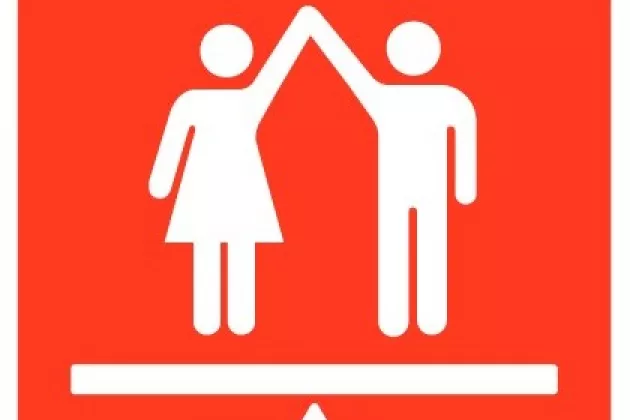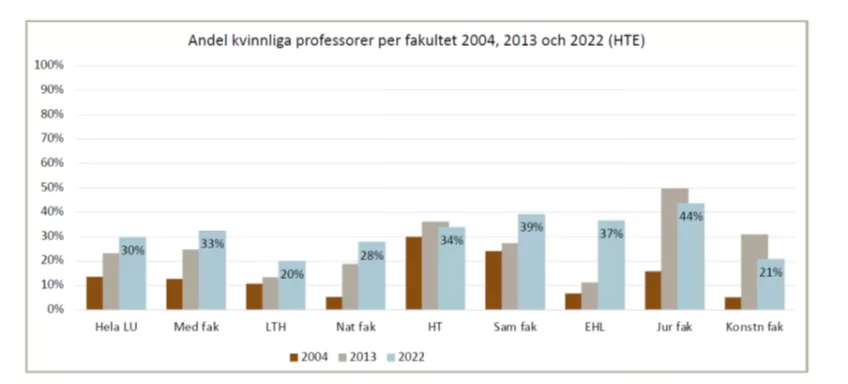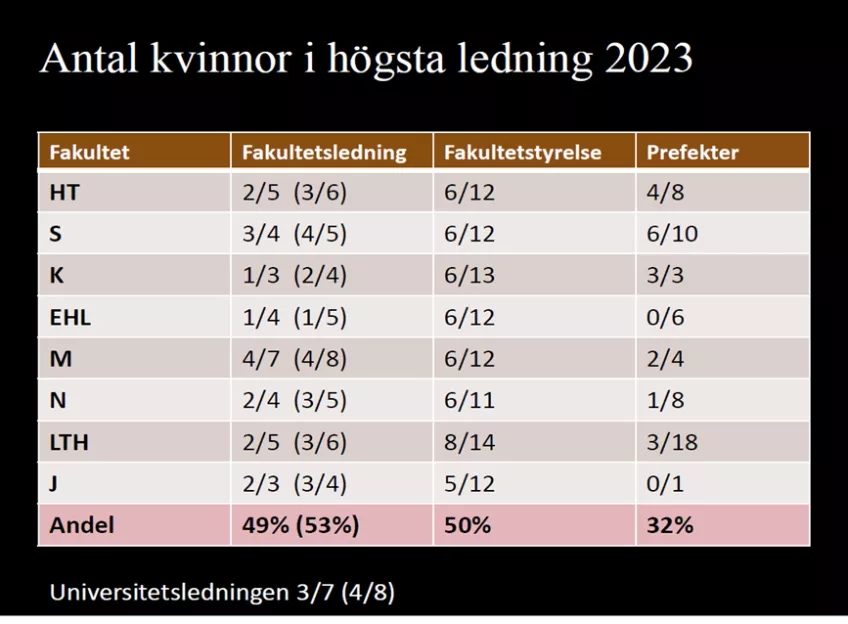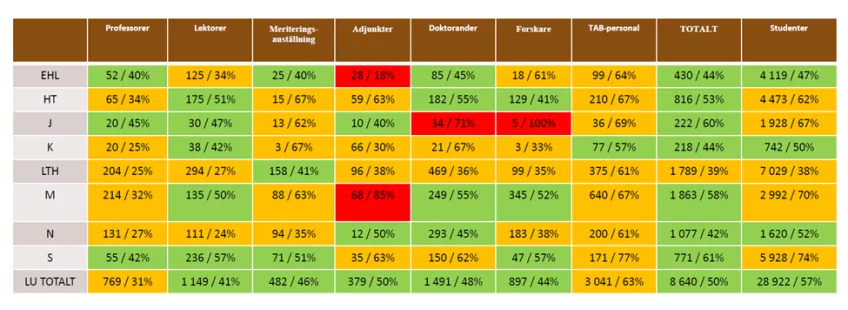If you compare gender regarding professors, women are still in the minority at 31% (December 2022), although the percentage of women has increased by 7% over 10 years. The percentage of newly recruited professors was 51% in 2022 (with a stipulated goal of 49%).Below you can see the percentage of women among the professors over time for each faculty.
The University’s work on gender mainstreaming entails that consideration is to be given to gender equality in all processes and decisions. The University’s Rules of Procedure state the goal that in all LU boards, councils and other bodies there is to be a balance between the genders (representation of one gender is not to be less than 40% of the members). Several initiatives have been proposed to achieve this. Among other things, recruitments for professor positions are to demonstrate a mixed field of candidates.
At the faculty management and faculty board level, there is an equal gender balance at all faculties. However, at the department level there is an imbalance. Among the heads of department, 19 of 58 (32%) are women. This is attributable to the large number of male heads of department at the Faculty of Engineering (LTH).
The table below shows the gender equality statistics for Lund University as a whole and the colours symbolise different levels of gender mainstreaming.
The number and percentage of women at Lund University in 2022 are broken down by faculty and from a gender mainstreaming perspective.
Regarding gender distribution among students and staff as a whole, the gender mainstreaming situation at the University is quite satisfactory. However, there are some differences between the faculties and between different job categories. At all the faculties, except LTH, women are in the majority among the students and the administrative staff.
Over the past two years, the Council for Gender Equality and Equal Opportunities has allocated SEK 8 million to strengthen efforts in this area. Among other things, the funding has been used for visiting professors of the underrepresented gender, various projects/initiatives at faculty level and for outward-focused activities.
Initiatives are being conducted in several places within the University to strengthen gender equality and equal opportunities at LU. Many initiatives and investments have been to implement changes introduced in 2021. Particularly important or pressing initiatives based on the overall goals in the Equal Opportunities Plan are presented below.
To achieve the goal “recruitment processes and career paths are to be free from discrimination”, overall work is being carried out to strengthen recruitment processes within the framework of HR Excellence in Research, which is an EU certification. A special project has also been established with a focus on increasing awareness of the risk of unconscious bias in connection with the assessment of qualifications and expertise. The project is led by Professor Tomas Brage and involves all the academic appointments boards, among others. One aim of the project is to review the criteria that can be considered to produce satisfactory, broad and qualitative documentation for assessment. Another aim is to develop a system for the assessment and evaluation of qualifications in which expertise and skills can be assessed without the risk of discrimination.
A support team has been established with an aim to ensure the professional handling of matters concerning sexual harassment, harassment and victimisation. The team is to assume a supporting role in systematic preventive work against discrimination (SFAD) based on the Discrimination Act’s requirements for active measures in four steps.
Within the framework for the goal “there is to be a high level of knowledge and understanding of gender equality and equal opportunities in the organisation”, the support team offers courses in the area.
To achieve the goal “systematic preventive work against discrimination (SFAD) is to be active and dynamic”, the team works on creating clear and appropriate procedures and working methods for risk assessments as well as procedures for measures and follow-ups. A network of coordinators at the faculties will also be formed.
In May 2023, a proposal for a university-wide working method will be presented along with a proposal for ways to identify relevant and measurable indicators that can capture other aspects of equal opportunities besides age and gender.
Read more:





